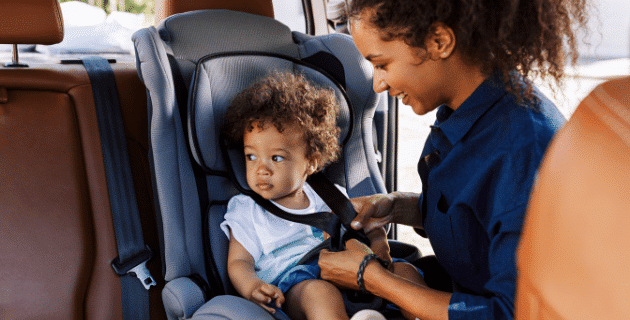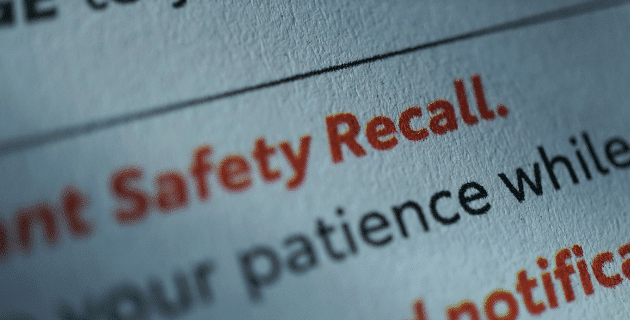
by California Casualty | Homeowners Insurance Info |
You found the perfect place to rent, and you’re ready to go. Moving company, check. Boxes and bubble wrap, check. Renter’s insurance?
If you’re wondering whether you need to purchase renter’s insurance, here are the most frequently asked questions.
What does renter’s insurance cover?
Renter’s insurance is like homeowner’s insurance but for tenants. As a start, it protects your personal belongings (that’s right, your landlord’s insurance policy will not cover your belongings) but that’s not all. It’s an important safeguard if you’re found at fault for property damage or injuries at your place (and even around the world). It also can help if you don’t have access to your apartment or home due to a covered loss.
Renter’s insurance policies offer (1) personal property coverage, (2) liability insurance, and (3) additional living expenses when your apartment or home is uninhabitable.
What is personal property coverage?
Personal property coverage protects your possessions. If they are stolen, or damaged by fire/smoke or other covered “perils,” your policy will pay for them. You’ll simply have to cover the smaller upfront fee known as the deductible.
You may choose the replacement cost or the actual cash value (ACV) for reimbursement. ACV is the amount the item is worth, minus depreciation for its age. It will cost a little more for a policy that provides replacement cost since that is higher than ACV.
With personal property coverage, you choose the amount of coverage based on how much your stuff is worth. The good thing is that your possessions are insured whether they’re at your place or away from it. For example, if you have a child away at college, who has an item stolen, your policy will pay 10% of your Personal Property Coverage C limit.
Note: Some policies limit certain types of possessions, such as jewelry. If you want a higher limit, you will need to add it to the policy.
What is liability coverage?
Liability coverage protects you if someone is injured and you’re legally liable. It could be at your place or it could be anywhere in the world. For example, if your dog bites someone, you’re covered. The policy pays for the bite victim’s medical expenses and covers court fees if they sue you. Liability also covers accidental damages to the place by you or your guests. So, if you accidentally set fire to your apartment, you’re covered. There are limits, so talk to your insurance advisor about an umbrella policy, which will provide much greater coverage.
What is loss of use coverage?
If a covered danger, like a fire or an evacuation, causes your residence to be unfit to live, your policy reimburses you for additional living expenses. For example, if you normally spend $200 per month on food and now it’s costing you $300, the policy will reimburse the additional $100. There’s a time limit and a dollar limit on this, so check on your policy’s details. Payment will be for the shortest time required to repair or replace the damage or, if you permanently relocate, the shortest time required for your household to settle elsewhere. It’s worth noting that if you have a Coverage Enhancement, there’s no deductible.
What exactly is the deductible?
If a loss does occur, a deductible will often apply. A deductible is the amount that you are responsible for, before the policy pays anything. So, before you get replacement or ACV for your possessions, you pay the deductible out of your pocket. Your deductible could be $250, $500, or more. You have a choice on the amount of the deductible. The lower the deductible, the more expensive the policy.
Note: There are times when there is no deductible. In a personal liability policy, for example, a deductible does not apply.
What isn’t covered by renter’s insurance?
Renter’s insurance doesn’t cover every situation. It does not cover damage from earthquakes, mudslides or floods. It does not cover infestations of rodents or bugs. There’s only limited coverage for theft of jewelry and firearms. A standard policy doesn’t cover your roommate’s possessions (though you could add them as an endorsement known as “Other Members of Your Household” for little or no cost). Renter’s insurance also doesn’t consider your car as one of your possessions. You need a separate auto insurance policy.
Note: Ask your insurer about home office and business computer coverage. That’s different than a personal policy.
Is renter’s insurance required?
Renter’s insurance is not mandated by law, but it may be required by your landlord, property manager or owner. Renter’s insurance helps keep others, including you, from seeking damages from them, even though they’re not responsible for your possessions. If you accidentally start a fire, the landlord’s insurance kicks in after they pay the deductible. But they could use your renter’s policy to cover that cost, so it’s a win-win for them.
What happens if you don’t have renter’s insurance?
If you don’t have renter’s insurance, you’re fully responsible for any property damage or loss. You’ll have to replace your possessions in the event of theft, fire, or other perils. You’ll have to pay the medical costs of anyone injured in your apartment. You’ll have to pay for additional living expenses if your apartment is inhabitable.
How expensive is renter’s insurance?
Renter’s insurance is surprisingly affordable. For as little as $10 a month, you can get a renter’s policy at California Casualty. The cost varies depending upon the coverages you choose, the deductible, your financial responsibility score, and multipolicy discount. Even your location can have an impact. Areas with higher crime rates will have higher insurance rates.
How much renter’s insurance do you need?
You want to have enough insurance to cover your possessions and any potential liability. Start by taking an inventory of what you own and putting a dollar figure on replacing our possessions. Then, take a look at your liability. Do you entertain a lot? Do you have pets? Determine the potential for injuries on site or any other property damage. You also want to take into consideration the amount of assets you have – such as your savings, etc. You want to make sure the amount you select will cover your assets. Then, choose the deductible that is affordable for you.
Can you get renter’s insurance after you’re already moved in?
Yes. You may purchase renter’s insurance at any time. However, it’s not retroactive. You cannot buy it after there’s been damage or theft.
Not all renter’s insurance is the same. Some policies cover more than others and costs vary. Check with your insurance provider to find out the options.
This article is furnished by California Casualty, providing auto and home insurance to educators, law enforcement officers, firefighters, and nurses. Get a quote at 1.866.704.8614 or www.calcas.com.

by California Casualty | Auto Insurance Info |
As parents, we do more than just drive our kids around. Our cars are on-the-go eateries, curbside retreats, entertainment stations, and sometimes even offices. Finding the perfect vehicle that fits all of the needs of your family is so important.
That’s why we’ve tracked down this year’s most popular cars for moms and dads. Check them out, all listed here in alphabetical order.
2022 Ford Expedition (Large SUV)
Starting at $51,000
If you can afford the price tag, the Ford Expedition is highly ranked by Edmunds for its space and power. You can fit up to 8 with ample room for your gear. With the premium package, you get a massive 15.5-inch high-definition touch display and the option for massaging front seats! The rear-seat entertainment systems let kids stream videos and play games on Amazon Fire TV.
There also are power-folding running boards which serve as a step-stool for kids.
2022 Honda Odyssey (Minivan)
Starting at $33,040
The Odyssey has been the top pick in past years for Kelley Blue Book’s “Minivan Best Buy” and a top safety pick for 2021-22 by the Insurance Institute for Highway Safety. It seats up to 8, including 5 car seats. The third row splits and folds with plenty of room for a stroller. The Cabin Watch feature lets you keep tabs on the kids in the back and a Cabin Talk option lets you chat with passengers through the speakers, including through DVD headphones. There’s a wireless charging pad in the front seat and front and rear USB ports. (Unfortunately, the popular vacuum cleaner is no longer included, as that company went out of business during the pandemic.)
2022 Hyundai Palisade (Midsize SUV)
Starting at $34,375
The Hyundai Palisade was a top safety pick in 2021 by the Insurance Institute for Highway Safety. It’s also one of Car and Driver’s favorite three-row family SUVs. There’s room for up to 8 passengers, and the second seat has a one-touch button that moves it forward to easily get to the back row. There are up to 7 USB ports and the ability to connect two Bluetooth devices at the same time. There’s also a touchscreen infotainment display. With seats folded down, there’s plenty of cargo room. Testers fit 33 carry-on suitcases!
2022 Kia Carnival (Minivan)
Starting at $33,555
The Kia Carnival is a minivan that looks like an SUV. They call it an MPV—multi-purpose vehicle. It seats up to 8 with plenty of legroom. Parents will love the optional in-cabin camera system with a zoom function and night vision that allows you to keep an eye on the backseat day or night. A VIP lounge option offers second-row captain’s chairs with kick-out leg rests. The third row can fold flat to the floor for extra storage. The vehicle’s Safe Exit Assist warns passengers not to exit if it’s unsafe. The car also texts you if movement is detected in your car 24 hours after you’ve exited, in case you’ve forgotten a child or a pet in the car.
2022 Kia Telluride (SUV)
Starting at $34,345
The Kia Telluride ranks in Car and Driver’s Top 10 Best Cars and Trucks for 2022 for its combination of comfort, safety, and affordability. It has luxury features like a 12-way power driver’s seat, a 10.3-inch touchscreen, and robust infotainment system, and heated and ventilated rear seats. Yet it will tug a 5,000-pound trailer with ease. Its quiet mode shuts off rear speakers and lowers the volume in front for nappers. There’s room for 8 unless you choose the option for second-row captain’s chairs, and then you’ve got 7.
2022 Subaru Forester (Small SUV)
Starting at $26,320
With safety and driver-assist features as standard, it’s no wonder that the Forester was a top safety pick for 2021 by the Insurance Institute for Highway Safety. There’s roomy seating for 5, and the Forester scores well on fuel economy (26 mpg city, 33 mpg highway). There’s a touchscreen infotainment system and up to four USB ports, including two for the backseat passengers.
2022 Toyota Highlander (Midsize SUV)
Starting at $36,420
Available as a hybrid, this popular family vehicle is a top safety pick for 2021-22 by the Insurance Institute for Highway Safety. It seats 8, with options for heated seats in the front and second rows. Infotainment and driver assistance features come standard. Choose a higher trim level and you’ll get a 12.3-inch display. Fuel economy is good, with up to 29 mpg on the highway with front-wheel drive.
2022 Toyota Sienna (Hybrid Minivan)
Starting at $36,000
Kelley Blue Book named the Toyota Sienna the best buy of 2022. As a hybrid, it delivers fuel economy – 36 mpg on the highway. It also is a top safety pick for 2021-22 by the Insurance Institute for Highway Safety. Three rows of seats are fully equipped with headphone jacks, charge ports, and the ability to recline back. Stow the third row for extra cargo space. The 9-inch infotainment system and a Wi-Fi hot spot makes it easy to connect.
2022 Volvo XC90 (Midsize SUV)
Starting at $51,995
Volvo is known for safety so it’s no surprise that the XC90 is a top safety pick for 2021-22 by the Insurance Institute for Highway Safety. If you can get past the price tag, it also has some nice features. Navigation is standard. You can choose a Climate Control package with a heated steering wheel and heated rear seats. The third row is not roomy enough for adults but works for kids. You can get this vehicle as a plug-in hybrid too.
2022 Volkswagen Atlas (SUV)
Starting at $35,095
With its large cargo capacity and comfortable three-row seating, the Atlas is made for family transport. Families will enjoy the multiple storage nooks and plenty of cupholders, as well as USB ports, including in the back seat. Testers fit an impressive 38 carry-on suitcases with the seats folded down, and four could fit behind the third row with the seats up.
Of course, you don’t have to buy a brand-new car. There are a lot of good options for used cars, too. Whatever you drive, make sure to protect your car with the right auto insurance.
For parents of teens, you can also check out the most popular vehicles for teenagers here!
This article is furnished by California Casualty, providing auto and home insurance to educators, law enforcement officers, firefighters, and nurses. Get a quote at 1.866.704.8614 or www.calcas.com.

by California Casualty | Travel |
Looking forward to relaxing on a warm beach, hitting the slopes on a scenic mountain, or choosing day trips for a stress-free staycation this Spring Break?
Check out our timesaving guide for planning your next vacation or staycation.
Set your budget.
Where can you go and what can you do? It depends on your budget. A travel budget is not an ironclad number; it’s more of an estimate. Think of a figure that you’d be willing to spend on a vacation or a staycation. Then determine if that amount covers the major expenses of your trip: accommodations and travel expenses.
-
- Research travel deals and airfare specials.
- Check out the rates of less popular airports near your destination to save money.
- Rent a car instead of flying.
- Check out different lodging options.
Choose your destination.
What’s your vacation style? Maybe you like touring museums and cultural attractions or you prefer lounging by the pool. You might like being active, such as skiing, hiking, or bicycling. The types of vacation that you most enjoy will help determine your destination. Match that to the budget and you’ll be able to choose a great destination.
-
- Take advantage of discounts, such as credit card points, AAA, or military.
- Check out additional discounts on Groupon, Kayak, Priceline, booking.com, and other services.
- Book your airfare and/or reserve your rental car.
- Create a draft travel itinerary. Buy tickets for popular activities so you won’t arrive and find them sold out.
Select your accommodations.
You may not be spending a lot of time in your room, but you do want a central location that allows you to do what you want to do. In some cases, like on a staycation, your lodging may be your entire vacation because it provides everything you need.
-
- Determine the amenities that are important to you. Do you want a kitchen where you can cook meals? A beachside location? A place that’s walking distance to everywhere you want to be? On-site entertainment? All-inclusive services?
- You can stay in a hotel, a cabin, a treehouse, a resort, a bed-and-breakfast, on a cruise ship, or any of a number of options. Choose the right lodging for your vacation style and your budget.
- Do you have friends or family that you’d like to visit? Consider staying with them and incorporating them into your vacation plans for all or part of spring break. Alternatively, see if they’d like to swap houses with you for the week.
Purchase insurance just in case.
Accidents happen and plans change. That’s where travel and rental insurance come in. Travel insurance can reimburse you if you are unable to go on your trip. Rental car insurance can help in the event of a collision or other damage to your rental car.
-
- Before you purchase rental car insurance, make sure your auto policy doesn’t already cover rental cars. Many policies do.
- If you’re renting a car out of the country, double-check that your auto policy covers you. For example, when traveling in Mexico, you will need a special Mexico policy.
- Travel insurance comes in many varieties. You can get trip cancellation, trip interruption, or trip delay insurance. You also can get baggage loss coverage. Talk to your insurance provider about what is available to you.
- You also can get medical expenses and medical evacuation coverage. This is important for trips outside the country. Once again, speak to your insurance provider to make sure you qualify for the coverage.
For the foreseeable future, you will want to take precautions to guard against COVID-19. After all, it’s no fun to be sick on vacation; neither is it a good idea to bring a virus back to your students. When traveling, follow these guidelines.
-
- Some destinations require COVID tests. Know the rules and regulations so that you can schedule your test before your trip or at the airport.
- Wear your mask at the airport and on the plane.
- Wash your hands frequently.
- Avoid crowds where possible, and stay 6 feet away from others.
Plan a staycation.
A staycation can be as much fun as a vacation with the advantage of being a lot more affordable. While you can certainly use the time for projects around the house, you can enjoy a real break by planning day trips and fun activities.
-
- You don’t technically have to stay home during a staycation. Consider one or two nights at a local hotel or other fun lodging.
- Choose a theme for your staycation, such as gourmet traveler, spa serenity, or tourist in your own town. Use it to inspire your activities.
- Enjoy fun takeout or restaurant meals that make the week feel special.
- Disconnect from social media and the news. Enjoy movie nights, game nights, and other interactive fun.
- Don’t forget that Educators & ESPs can win a $10,000 Staycation Giveaway from California Casualty!
What are your plans this Spring Break? Share it with your colleagues in the comments.
This article is furnished by California Casualty, providing auto and home insurance to educators, law enforcement officers, firefighters, and nurses. Get a quote at 1.866.704.8614 or www.calcas.com

by California Casualty | Auto Insurance Info |
We want our cars to be safe and reliable, yet sometimes, parts malfunction. When it’s a defect that creates a safety risk, the automaker is responsible for fixing it. That’s when you get an auto recall notice. These notices inform car owners that something needs to be adjusted or replaced to make their vehicles safe to drive.
How common are recalls?
Recalls happen all the time. In 2020, there were nearly 900 safety recalls affecting 55+ million cars and equipment, according to the National Highway Traffic Safety Administration (NHTSA), the government agency responsible for exploring safety complaints. NHTSA looks at safety issues, both large and small. If the car doesn’t meet the minimum safety standard, automakers are required to announce a recall. The recall is usually for a specific make and model. The vehicle manufacturer is legally obligated to inform buyers and cover the costs of repairs. Even so, only about 75% of vehicles recalled in a given year are ever fixed, according to NHTSA.
Note: There is a time limit on recalls, usually 8 years. A repair after that timeframe usually means you have to cover the cost.
Why might my car be recalled?
Recalls affect parts of the car that could cause an immediate safety hazard. They could be small or large, and include airbags, tires, brakes, engines, and electrical components. They would not, however, include air conditioners, radios, or ordinary wear and tear. One recall that occurred this past year was for the seat belt in a Ford Motor F-150 Super Cab. The belt was installed incorrectly and as a result, didn’t provide enough restraint in the event of a crash. Takata airbags again surfaced this year as NHTSA looked at 20+ automakers who used the potentially explosive bags. Other 2021 recalls were for brake issues, hood problems, battery fire hazards, and diesel engine stalling, according to Car and Driver.
Why do people sometimes ignore recalls?
It may be because they are not aware of the recall. Perhaps the notice was mailed to an old address and not forwarded. Maybe they think it will take too much time or effort, or they could be without a car. Finally, they simply may not care.
Why should I pay attention?
It’s easy to ignore recall notices. Don’t. Even a small defect can put you in a life-threatening situation. Plus, ignoring a recall can affect your insurance. If you’re involved in an accident and the faulty part is the cause, you might not get reimbursed for repairs or for medical costs.
How do I know if my vehicle has been recalled?
If you’re the original owner of the car, you should get a recall notice in the mail. If you take your car in for regular maintenance at the dealership, you also should be notified. If, however, you purchased the vehicle as a used car, and you get your car serviced at a local mechanic, you may not be aware of a recall. It’s easy to check, however. Visit the NHTSA recalls website and input your vehicle identification number (VIN). You’ll find this 17-character number on the lower left of your car’s windshield, on the inside of your driver’s side door, or on your registration or insurance documents. Not only can you check car recalls, but you can find recalls on child car seats and tires. You can also download the app to your phone and get alerts.
What do I do if I get a recall notice?
If your car is recalled, contact the dealership and schedule a repair as soon as possible. Ideally, the dealership will provide a loaner car but if not, you may qualify for a rental car with your auto policy or be reimbursed. If the dealer gives you a rental car while yours is being repaired, you’ll want to verify that you have the right insurance coverage for a loaner. Finally, if you already fixed the defect before you learned about the recall, you can get reimbursed from the dealership.
Recalls keep us safe. Other ways that you can stay safe are to wear seat belts, practice defensive driving techniques, and maintain and insure your vehicle. After all, your car is one of your greatest investments. Safe travels.
This article is furnished by California Casualty, providing auto and home insurance to educators, law enforcement officers, firefighters, and nurses. Get a quote at 1.866.704.8614 or www.calcas.com.

by California Casualty | Educators |
Teachers and students alike have been working hard all year long and they’ve finally reached 100 days together in the classroom. It’s time to celebrate this milestone! Here are some fun activities you can do in your classroom when you reach 100 days of...





